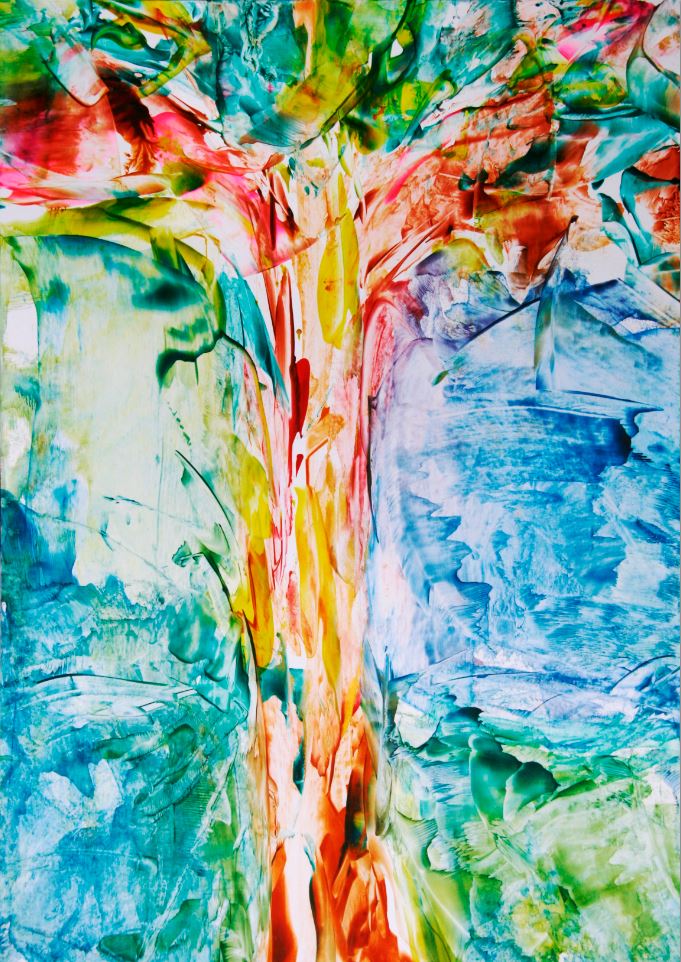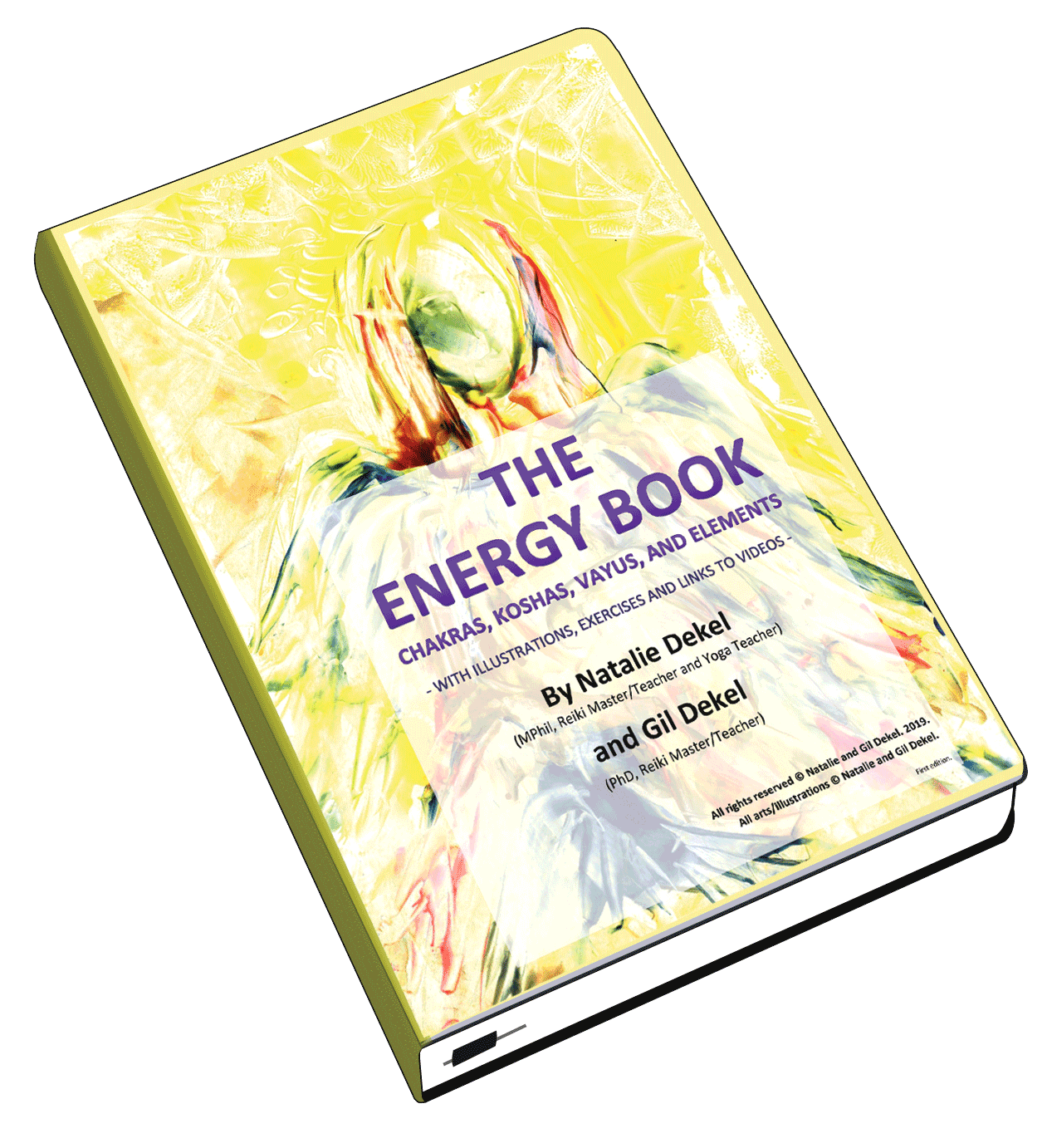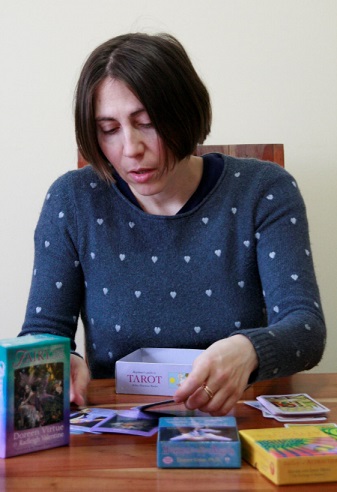with Gil Dekel.
This lesson continues page 4 (which is numbered ‘10’ in the Hebrew), from Perek 1 of the book.
The Alter Rebbe has been at pains to explain that he does not mean that a ‘Beinoni’ was half sins and half ‘Mitzvots’. Beinoni is not a person who’s a halfway person, because we already understood, and he brought a lot of different proof from different places in the sayings of our sages in the Mamariu Hazal, that if a person does the slightest misdemeanor, the slightest wrong he’s already called a ‘Rasha’.
He went to the extreme level: if a person just fails to rebuke another and doesn’t bother about another person doing wrong, he is then called a ‘Rasha’. Even someone who neglects to do a positive command and fails to study the Torah when he has time, that also makes the person somebody who’s considered to be a Rasha.
So therefore we see that the Beinoni has to be someone who has no sins. This seems paradoxical and it’s difficult to see how this could be. He doesn’t even have the sin of neglecting to study Torah… at least this explains how the Rabah, one of the great sages of the Talmud, could mistakenly say about himself, and genuinely believe that he was a ‘Beinoni’, when he was in fact a ‘Tzaddik’.
We’re now at the top of page 4 (page 10 in hebrew), five lines down, and here the Alter Rebbe comes to pre-empt a question that we might have, as follows: If we look into the Gemorah (Gemara גמרא) we learn about the day of judgment (Yom HaDin) on Rosh Hashanahראש השנה – every years a person is judged, and when a person goes to the ‘Olam HaEmet’ (the afterlife) he’s judged for what he’s done; and there the Gemorah says quite simply that the person’s sins are weighed up on the scales, on Moznaym.
Here is the contradiction: when it comes to the Yom HaDin a person’s mitzvot are put on one side of the Moznayim and on the other side his sins ‘Aveirot’ – and we see which way the scale goes down. That’s what the Gemorah says. So the Alter Rebbe quotes this:
והא דאמרי’ בעלמא דמחצ’ על מחצה מקרי בינוני ורוב זכיות מקרי צדיק
It’s understood generally that if a person has exactly half and half דמחצ’ על מחצה and the scales are exactly balanced then he’s call a ‘Beinoni’, and if he had a majority of merits he is then a ‘Tzaddik’.
We see that this seems the definition of the Gemorah; on the day of judgment if it’s half-half, he’s a Beinoni. But we’ve just refuted that…
הוא שם המושאל
The answer is הוא שם המושאל : this is just a colloquial term, a borrowed term. It’ a terminology we use in a borrowed sense. We’re not using it accurately; it’s being used in the borrowed sense…
לענין שכר ועונש
For the purpose of reward and punishment.
לפי שנדון אחר רובו מקרי צדיק בדינו
Because a person is judged according to the majority of what he’s done. When he’s judged, he goes off to the majority and he’s called a Tzaddik in the form of a borrowed term in terms of the case which has been brought against him in the judgment that is allocated to him מקרי צדיק בדינו .
מאחר שזוכה בדין
Since he was meritorious, he won his case; he was acquitted from the court because he had more merits than sins; therefore he’s called Tzaddik. When we use the word Tzaddik here, it is Tzaddik in the judgment, in the Dino בדינו .
אבל לענין אמיתת שם התואר והמעלה של מעלת ומדרגות חלוקות צדיקים ובינונים
But in the true descriptive term of the quality, of the actual level, when we talk about the quality and the level, all the different levels of Tzaddikim and Beinonim, there are many different grades and levels. There we know that that’s quite different.
יצ’ט שופטן ארז”ל
We learnt already, that our sages have taught us that the Gemorah says that Tzaddikim Yetzer Tov influence them, and the Beinonim are influenced by both good and bad inclination. Tzadik, he has no yetzer hara, he has no bad inclination in him at all.
שנא’ ולבי חלל בקרב כי הרגו בתענית
“My heart is empty within me.” Like King David who said when he did Teshuvah after his act with Bat Sheva. David testified that, “I fasted so much that Libi HaLal BeKirbi ולבי חלל בקרבי , my heart is empty within me.” What he was saying was that the seat of the yetzer hara on the left hand side of the heart was empty now. He killed his yetzer hara with fasting כי הרגו בתענית . ln other words, he killed all his desires, the physical things by fasting. And that was the true definition of Tzaddik – someone who has no longer yetzer hara at all.
אבל כל מי שלא הגיע למדרגה זו אף שזכיותיו מרובים על עונותיו אינו במעלת ומדרגת צדיק כלל
But someone who has not reached taht level, even though he’s got more merits than sins, he is not on the level of a Tzaddik whatsoever.
ולכן ארז״ל במדרש ראה הקב”ה בצדיקים שהם מועטים
Therefore, we see that the Tzaddik is a very, very rare commodity; he’s a very, very high level. There are no many Tzaddikkim. This is an unbelievably high Level (Madrega) to no longer have a yetzer hara at all…
It’s not good enough not doing sins, but to also not even have a yetzer hara. That’s what makes a Tzaddik. Now we can understand what our sages said in the Midrash. God looked into the souls of the tzaddikim and he saw that they are only a few of them.
עמד ושתלן ככל דור ודור וכו׳
…and he plants them in every generation.
וכמ”ש וצדיק יסוד עולם
That a Tzaddik is the foundation of the world. So what’s Alter Rebbe saying here? First of all he’s saying that we shouldn’t get confused. We find the terminology of tzaddikimm, Benonim, and Rashaim, used in different contexts.
In the context of the day of judgment and Rosh Hashannah we find the words being used in a colloquial sense, in a borrowed sense, and there all that is being analyzed is how the person is going to be treated when he comes before the heavenly court.
The Gemorah says that when a person has a majority of merits and the scales weigh down on the side of merit, he’s called a Tzaddik. And if the scales weigh down on the side of evil, God forbids, he’s called a Rasha and; if they’re equally balanced he’s called a Beinoni – that’s to do with judgment. The Alter Rebbe says here that the terminology is used in the borrowed sense and it is not the exact meaning of Tzaddik and Rasha and Beinoni when you come to analyze their true essence.
The essential meaning is defined in how well the person operates when he makes decisions. When a person needs to make any decision in life, he weighs up the positives and the negatives and finally comes to a conclusion; and sometimes he finds in himself contrary voices. He’s given different views about what he should choose; how he should be conducting his life.
And that’s what the Gemorah says, in Brachot ברכות that we have a yetzer hara and a yetzer tov and when they both express an opinion equally, that’s a Beinoni. When the yetzer hara has the upper hand, it has the sole decision-making process; that’s a rasha. And when the yetzer tov has got sole control, that’s a tzaddik. The other definition it using it in a colloquial sense, in a borrowed sense.
Based on that, we come to the conclusion that a beinoni is a very high level because a beinoni is someone who doesn’t do any sin. But now we understand that a tzaddik is even higher because the tzaddik doesn’t even have an inclination to do any sin. A tzaddik is on such a pure level that he doesn’t have any inclination to do bad; not that he doesn’t do bad (that goes without saying) but he doesn’t even have the inclination to do bad in all three levels of thought, speech and action.
On the title page we said that we’ve come to explain how it’s easy to keep the Torah on the level of thought, speech and action. It says in the quotation we had right at the opening, מיוסד על פסוק כי קרוב אליך הדבר מאד בפיך ובלבבך לעשותו, the Sefer is already in your heart, in your mouth, in action (your heart refers to thought).
So here we see that a tzaddik is someone who has no inclination, he has no temptation whatsoever, whereas the beinoni is one who has the inclination and he overcomes it.
The Alter Rebbe has now set out the parameters with which he wants to now go further in the discussion of what a beinoni is. And he goes on:
אך ביאור הענין על פי מ”ש הרח”ו ז”ל בשער הקדושה
The Chayim Vital was a student (Talmid) of the Ha’Ari Ha-Kodesh, the Mekubal מקובל who leanrd in the city of Zfat צפת. Chayim Vital writes in the sefer called ‘Shaar Ha Kdushah’. We also we find him in the sefer of the Ha’Ari himself, the sefer Etz Chayim. There they are talking about this situation. And there the Ha’Ari explains:
דלכל איש ישראל אחד צדיק ואחד רשע יש שתי נשמות
That every single person, man woman, whether he’s a tzaddik or a rasha, has two souls. For children, only by Bat or Bar-Mitvah they get the second soul. So every person has two souls – two Neshamot. This is plural (שהן שתי נפשות).
For the rest of this chapter (Perek) the alter Rebbe talks about the first soul, the animal soul and in the beginning of Perek Bet (Chapter 2) he talks about the second soul, the godly soul. So the first soul as he goes and explains is the soul that every living creature has:
נפש אחת מצד הקליפה וסטרא אחרא
This one soul is coming from the Kelipah (Kelipot/Qliphoth קליפות) and the Sitra Achra (Other Side). In other words, this soul derives from something which is actually potentially bad, Kelipah is another word for evil… It’s like a shell. The cover; if you take a nut for example, you have the cover. Before you eat the nut you have to crack the shell. If you mix a little bits of shell with the nut it’s very difficult to eat, it’s bad.
The Sitra Achra is also another name for ‘the other side’. It’s means euphemistically the opposite of Kdusha. Very ofthen the Chazal חז’ל use statements which are euphemistic; they don’t want to use bad terms; so instead of saying evil they say ‘something that is opposite of holiness’ – the opposite of Kdusha, the sitra achra, the other side.
The term Kelipah means the shell. So normally you would throw away the shell; it’s something you don’t want. But on the other hand, it protects the fruit. It has a purpose. When it is separate but surrounding the fruit, it’s good because it stops the fruit from being harmed, it protects it. It’s only when the Kelipah is mixed in with the fruit that it becomes bad.
We see the same thing that evil in itself is not something bad. Things that God created in the world which are forbidden to us are not bad in essence, as long as we don’t use them and don’t mix them with the things that are permitted.
For example, when you go past the butcher shop where they have ham or bacon… it’s not something ‘bad’. Pork (Hazir) is not something which is essentially bad. It’s bad for us to eat it… when we mix it with our food it’s then evil. But as long as we don’t have anything to do with it… it’s got its own purpose.
An interesting point here: the sin that Adam and Chava did when they ate from the tree, the Etz Hadass. They knew how to differentiate goon and evil, but they failed to differentiate. They knew but did not do so… The Kabbalah explains that up to the moment of eating from Etz Hadass, evil had been separate from good. That’s why God told them, ‘Don’t eat from it. You don’t need it.’ However, once they ate from it they caused good and bad to be mixed together – the mixture of good and bad.
For instance, it is said וידעו כי ערומים הם , they knew they had no clothes on, and they knew that they were naked. Now ‘knowing’ is not ‘being’. The ‘being naked’ was not wrong because they didn’t know any bad. They didn’t have a Yetzer Hara before the sin. Therefore bging naked was not something bad, it was natural.
Once a person begins to sense the potential for the bad… as soon as they ate from the tree of knowledge of good and bad, they suddenly had this knowledge that there was something to be embarrassed about beign naked, and so they took the leaves and covered themselves over. The knowledge itself created the potential for bad.
In other words, and to use a nexample: they took the Kelipah and instead of keeping it the way God made it (separate from a fruit), they mixed it in with the fruit. Self-awareness is what they gained – and it has the potential for bad, because what a person is supposed to feel is a selflessness, unselfishness, total unawareness of oneself as separate. A good person is one who thinks of others all the time. His life is centered around helping and doing good for everybody else.
This is a level of a tzaddik, of course. There is a level where a person can reach such a great level that he doesn’t feel anything but what God wants.
So we see that the ego is the source of all bad. It doesn’t mean that I mustn’t help myself; it doesn’t mean I shouldn’t do things for myself, it doesn’t mean that I should not have good – but it does mean that we shouldn’t be centered around that.
As we begin to develop self-awareness, everything around us is put in a relationship and a perspective related to us. Some people walk into a room of people and they feel a sense of ‘I’, where everything around them has to relate to how they are. Other people walk in, and they’re self-affacing. They look at what they can do for others, not what other people can do for them.
So we have one soul which ultimately derives from Kelipah and Sitra Achra.
והיא המתלבשת בדם האדם להחיות הגוף
Where do you find this soul? This spiritual soul clothes itself in the physical blood of the body. The blood is what gives you life. The circulation of blood around your body keeps you healthy, carries nutrients around the body, carries the oxygen, carries everything you need to live. If there is – God forbids – a suspence of blood then there is a thrombosis, a stroke, a heart attack, it’s life-threatening.
וכדכתיב כי נפש הבשר בדם היא
It says in the beginning of the Torah, that the Nefesh wears the soul of the flesh בדם היא – in the blood. The Torah refers to the first soul that every single living creature has.
וממנה באות כל המדות רעות מארבעה יסודות רעים שבה
From this soul, from this Nefesh which is clothed in the blood, we find derived all the bad Midot and the four elementary substances which are within it. The four elements: fire, water, air and earth. These four elements have their corresponding spiritual counterparts, which are all within the Nefesh Behemit, the so-called animal soul which is enclosed in the blood.
דהיינו כעס וגאוה מיסוד האש שנגבה למעלה.
Fire which always rises; it is lifting itself up so this Yesod in the nefesh brings out the bad midot of ka’as and gaavah. Ka’as (anger) comes when you assert yourself over somebody. You only get angry with somebody you think you’ve got a right to tell off. The same with Gaavah. Gaavah is arrogance, pride, overbearingness with another person.
ותאות התענוגים מיסוד המים כי המים מצמיחים כל מיני תענוג
Ta’Avot are lusts. They appear when a person is longings to indulge themselves in pleasure continually. The person is having no other thoughts but the pursuit of physical pleasure. This is the evil aspect of Yesod Ma’im, water. Water causes lusts to grow.
Of course, each of these elements also lives on the side of good, but here we’re talking abut how they’re related to the animal soul.
והוללות וליצנות והתפארות ודברים בטלים מיסוד הרוח.
What do we get from the element of air? Emptiness, clowning around, mockery, empty talk; things that are like hot air balloons. Emptiness, mockery, boasting, where people fall into blowing themselves up with emptiness.
31 May 2014.
© Gil Dekel. My thanks to my teachers.
Likkutei Amarim – Tanya, Bi-Lingual Edition, Revised, ISBN 0-8266-0400-5, ‘Kehot’ Publication Society, NY. 1993 [© 1984]. Pages 4.



 - Reading with Natalie, book here...
- Reading with Natalie, book here...